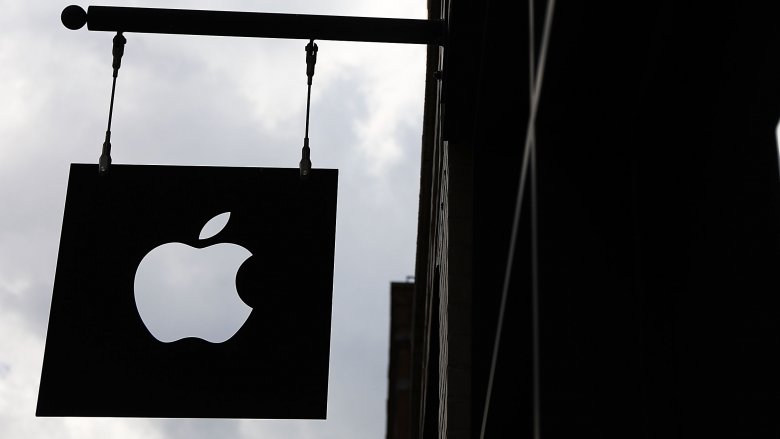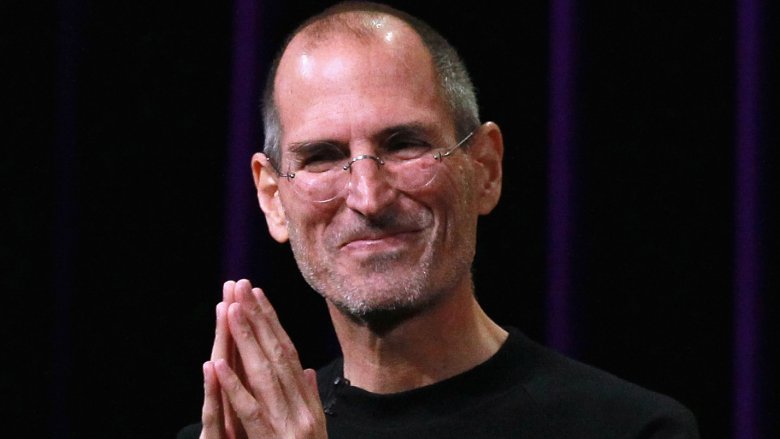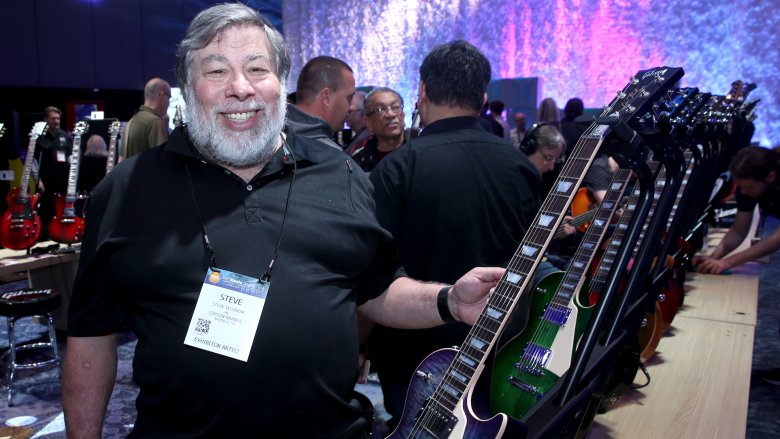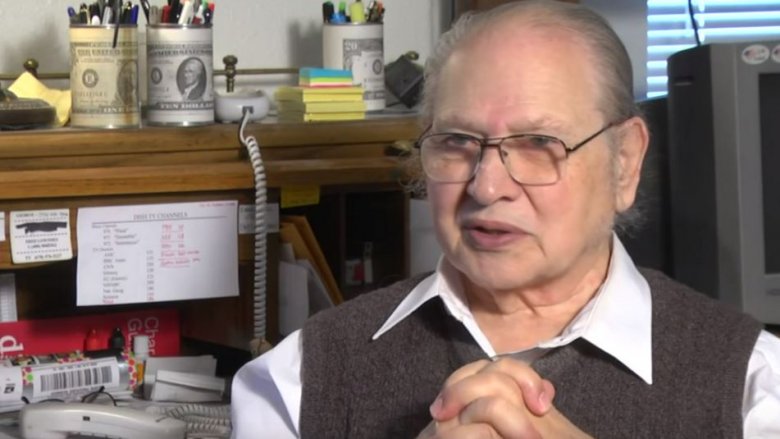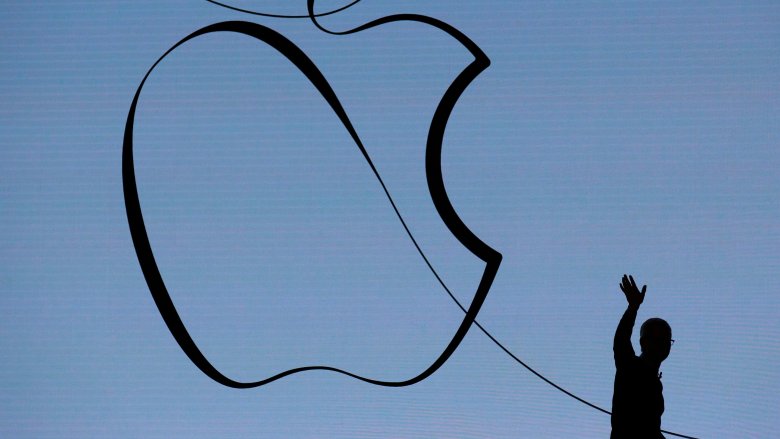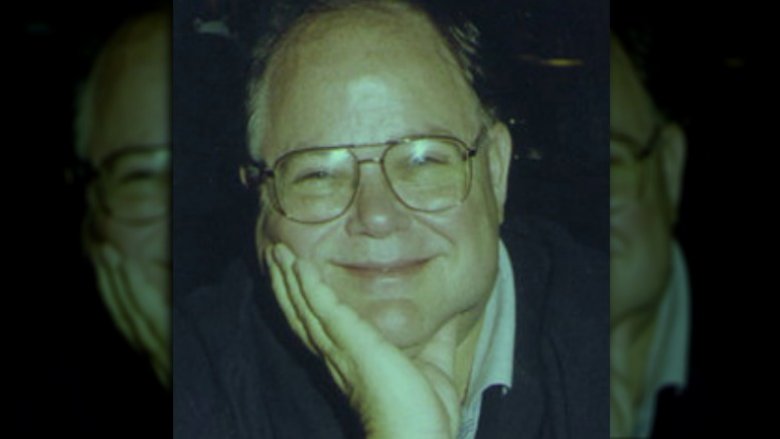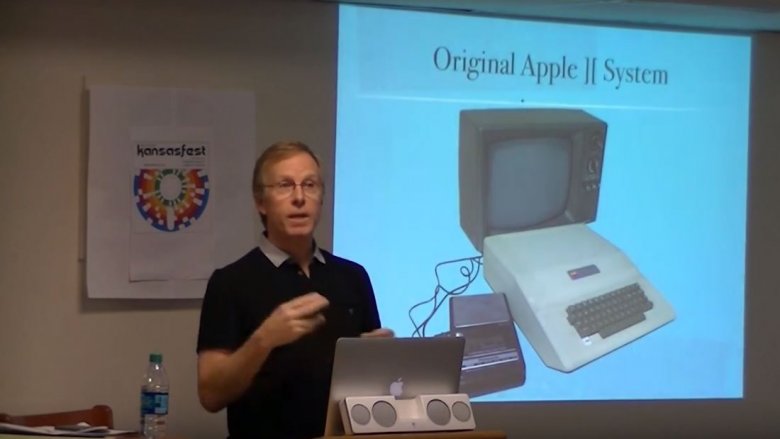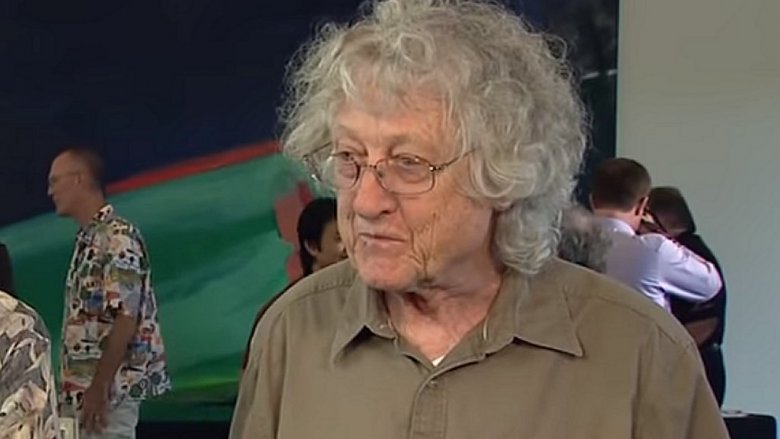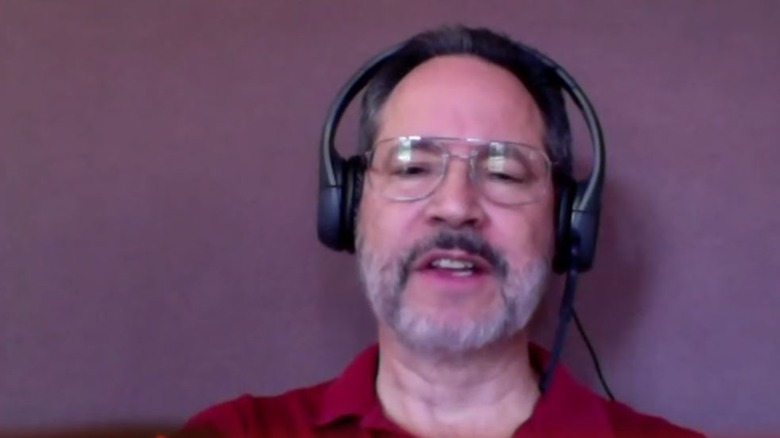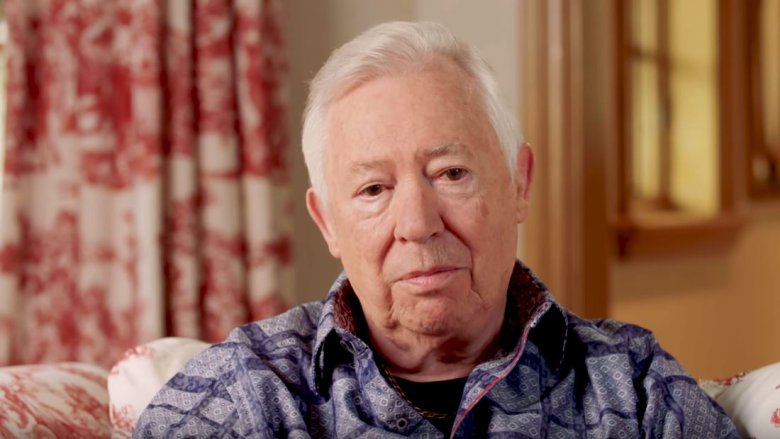Where Apple's First 10 Employees Are Now
For decades, the ultimate symbol of what's new, cool, and trendy has been a little fruit with a perplexingly clean bite mark. As proven by the evolution of the company's products, from 1976's Apple I computer to 1998's rainbow-colored iMacs — not to mention the electrifying sensation of products like the iPod, iPhone, and iPad — Apple has long owned the tech zeitgeist by introducing a slew of world-changing products, often via a guy in a black turtleneck standing before a big screen. It can be hard to believe that such a giant of industry started in a garage.
Back in the early days, Apple's first employees were mostly just a mishmash of kids, rebels, and newbies, trying to build a product that worked. Tracking the exact order in which Apple first hired people is tricky, but the following ten people, with one bonus entry, are believed to have been formally assigned the first ten payroll numbers, forever codifying them as the original crew. They've all come a long way since those scrappy years, and some have even returned to a simpler life. And hey, if you think that Steve Jobs was Apple employee No. 1, well ... read on.
Steve Jobs
You'd think Steve Jobs would be employee No. 1, although if he'd been the one assigning numbers, he certainly would have given himself first place. Unfortunately for him, that duty went to Apple's original CEO, Michael Scott (employee No. 5, also in this list), who told Business Insider that he specifically didn't give the No. 1 spot to Jobs because he thought it would be "too much." Ouch.
He wasn't always at the helm of Apple, though. In 1985, as Apple was maturing, Job's unconventional leadership was deemed by the company's board to be a poor fit, and was sidelined. Jobs being Jobs, he abruptly left and forged his own path. He started NeXT Software, with unremarkable results, and bought Pixar, which did far, far better. By 1997, Apple was facing significant financial and technological hurdles, and Jobs was invited back. By 2000, he was firmly back in the driving seat as CEO, and ready to make more history. Nonetheless, Jobs will forever be the enduring face of Apple. Known for his familiar uniform and rousing comeback story, Jobs was a foster child and college dropout who overcame many life hardships to co-found the tech giant and guide disruptive innovations like the iPhone. From all reports, Jobs could definitely be a difficult guy to get along with, but there's no doubt his creative vision was at the heart of Apple's market dominance.
Sadly, a diagnosis of pancreatic cancer in 2003 proved to be his undoing. Jobs dealt with the disease for nearly a decade before dying from it in 2011, at just 56 years old.
Steve Wozniak
Steve Jobs might've been the guy on the stage, but Apple employee No. 1, Steve Wozniak, was the technical genius who made things happen. The two celebrities went to the same high school, albeit years apart, and then partnered on a 1971 Wozniak design called the "Blue Box," a phone-hacking device that allowed you to make long-distance calls for free. Woz also had an internship at Hewlett-Packard, where he innovated "his own microcomputer," which didn't interest the big company, but earned huge enthusiasm from Jobs. The dynamic duo then set up shop in the Jobs family garage, made the computer, and Apple was born.
When Apple went public, Woz became a millionaire. However, big change was afoot, and by 1985, Woz had left the company, telling InfoWorld that Apple had been on a bad road for the past five years. Though Woz never went back to Apple, he did point out in 2018 that he was never actually dropped from the company's payroll. Still, Woz has kept himself busy in the following decades. Apart from a series of board and advisory roles for various companies over the years, in 2009, he founded Fusion-Io, which was involved in solid-state technology, and in 2020, got into cryptocurrency with the environmentally focused EFFORCE.
The space industry was also graced with Wozniak's entrepreneurship in 2021, with him co-founding the aerospace company Privateer, which launched its first satellite in 2023. He's been a regular star on screen, too, once cameoing in "Big Bang Theory," competed in "Dancing with the Stars," and was a panelist on the Dragon's Den clone "Unicorn Hunters."
Ronald Wayne
Ronald Wayne left Apple before they handed out payroll numbers, but he'll always be a big part of the company's history. Wayne joined Steve Jobs' and Steve Wozniak's little enterprise with the idea being that his adult experience — Woz and Jobs were only 25 and 21, respectively, when Apple incorporated — would guide the company to success. For a 10 percent stake, Wayne drafted the company outline, and even drew Apple's first (and ultimately abandoned) logo.
But, here's the thing: While the two Steves were broke kids with nothing to lose, the third founder Wayne was in his 40s with plenty to lose, including his house, if the business went kaput. With that worry in mind, Wayne sold his Apple shares for a mere $800 just 12 days after the company officially started up.
To be fair, there's an alternate reality where Apple flopped, and Wayne made the right call. In this universe, though, Wayne's exit proved to be a massive mistake: today, those shares would be worth $95 billion. As if that wasn't painful enough, Wayne later sold off his original, dusty, Apple contract for $500, only for the same piece of paper to later be auctioned for $1.59 million. In 2014, Wayne did better selling more old Apple documents at a Christie's auction, taking home $25,000. Now semi-retired, Wayne is an avid stamp collector and the author of several books, including "Adventures of an Apple Founder."
Gary Martin
Forever marked as Apple employee No.10 according to payroll, Gary P. Martin was, and is, a self-proclaimed "startup company junkie." His addiction began when he joined Apple in 1977, as their first corporate controller. Back then, he had concerns that the young company would probably hit dirt, but luckily for him, he stayed on.
Apple's unexpected success kept Martin on board until 1983, whereupon he joined the software startup Starstruck — a company involved with space travel. After that, Martin spent eight years at another startup called Chips & Technologies, was vice president of finance at a disk drive maker called Ministor Peripherals, followed by the same position for the then-hot technology firm 3Dfx in the mid-to-late-90s.
In the 21st century, Martin spent a spell on the board of a Canadian technology company named LeoNovus, which produces cloud solutions for data storage, before retiring from the technology sector and moving into private investment.
Sherry Livingston
While not much is known about Sherry Livingston, it definitely sounds like she was the glue that kept the first Apple crew hanging together. Frequently cited as being Apple's "right hand" woman, Livingston was the company's first secretary, which meant, realistically, that she did just about everything you can imagine.
According to Michael Moritz's "Return to the Little Kingdom: Steve Jobs and the Creation of Apple," Livingston described her role at the company as a bit nebulous. "Everybody did a bit of everything," she said, adding, "I didn't feel as though there were presidents and vice presidents. I felt as though we were all peers." Needless to say, it sounds like she was instrumental to the company's early operations, and by all accounts, she maintained a cheerful disposition throughout the heavy lifting.
Today? It seems like she keeps a low profile. She's now a grandmother, but little else is known about her current whereabouts and she appears to be living the quiet life.
Chris Espinosa
Chris Espinosa was only 14 years old when he joined the Apple train (or 15, if you believe Steve Jobs'). Either way, the dude was legitimately programming computers in Steve Jobs's garage during the same years he was riding the Homestead High School bus, and he's generally regarded as being Apple's longest-serving employee.
If you're wondering what his teachers thought, well, he told Stanford that they actually warned him against Jobs and Woz. He didn't listen, obviously, which is one of the few times in history where ignoring a teacher's advice proved to be a good thing (don't get any bad ideas, kids). Despite the fact that he was so young his mom had to drive him to work, Espinosa's bright software know-how and upbeat personality — which he still has today — proved a great fit. One of his primary duties involved doing Apple computer demonstrations for the public at least twice a week ... you know, after the last school bell rang.
Throughout the years, Espinosa stayed with Apple through the tech giant's many highs and lows. These days, he works on special projects for Apple, and he is expected to maintain an active role in the company's future.
[Featured image by Meredith Espinosa via Wikimedia Commons | Cropped and scaled | CC BY-SA 4.0]
Michael Scott
Michael Scott was the one who assigned Apple's payroll numbers, and the only reason he picked No. 7 for himself was to make a humorous reference to the ever-badass secret agent 007, James Bond.
That said, the real Scott is a highly capable businessman who gave those young, wacky Steves the necessary adult supervision to turn Apple into a breakout hit. Brought onto the crew by backer Mike Markkula, Scott never actually went to the famous Apple garage, but he opened a bank account, supervised the manufacturing process, and structured the startup into a real company ... you know, by doing all the boring "adulting" tasks that don't get headlines, but are the secret ingredient to success.
By 1981, Scott had succeeded in bringing Apple from a punk garage band of engineers to a publicly traded company. He moved on to engineering rockets, traveling the world, and bringing other sci-fi concepts to life, such as funding the development of a real-life equivalent to the tricorder from "Star Trek." Now that he's mostly retired, his pursuits are a bit more down to earth: he's a well-regarded expert on gemstones, and it's said that his collection rivals that of the world's royal families, which he has put to good use for the mineral identification database, the RRuff Project.
Randy Wigginton
There were a couple of high school kids working in the Apple garage, believe it or not, and Randy Wigginton was one of them. In fact, his Apple tenure actually predates the garage, all the way back to him and Steve Wozniak writing code on a couch. Hey, all great innovations start somewhere.
While the fact that Wigginton balanced high school with Apple work seems mind-blowing today, keep in mind that, at the time, he was only earning $2.50 an hour for some weird startup company that might flop at any second. People weren't exactly hopping up and down to drive this kid to his weirdo job, so getting rides was a struggle. Nevertheless, Wigginton was so dedicated (and full of youthful energy) that he'd get up at 2:30 a.m. on school days to write code, which is admittedly quite impressive. Wigginton hit the road in 1985, citing the fact that post-Michael Scott and post-Steve Jobs, the new Apple had become "very corporate and bureaucratic."
In the years since, Wigginton has worked for a veritable who's who of cultural tech giants, including PayPal, eBay, Google, and Chegg. From 2011 to 2023, he reported to Jack Dorsey — co-founder and CEO of Square — a guy whose style and approach often gets compared to Wigginton's former boss, Steve Jobs. And now? He describes himself as "funemployed," according to his LinkedIn profile.
Rod Holt
Every team needs a rebel genius, and so Apple had Rod Holt, a guy described by Cult of Mac as the "chain-smoking Marxist engineer" who masterminded the Apple II power supply. It was Holt's innovations — in regard to the switching power supply — that enabled Apple to create the lightweight computers that made them famous. Holt's other important duty was preparing the morning coffee, and he had a reputation for making it very strong — essential for a scrappy startup.
Outside of his Apple work, Holt led a fascinating life. Born in Boston during the Great Depression, Holt became passionate about electronics as a teenager, once operated his own motorcycle shop, was a passionate advocate for socialist policies, and worked for Atari ... all before deciding to join up with those crazy kids in the Apple garage.
As Holt tells it, he was booted from Apple by the new management in the 1980s. Holt has kept a low profile since then, but back in 2006, he expressed an interest in doing more sailing (one of his favorite activities), as well as perhaps finding a teaching position involving Marx, Engels, mathematics, and logic studies. He's still around and attending events, and is estimated to have made $67 million from his Apple days.
Bill Fernandez
Bill Fernandez was recorded as Apple employee No. 4, but he was, technically, the first person hired after the two Steves. Even better, Fernandez was the guy who introduced the two Steves to each other for the first time, so his actions directly caused one of the most monumental pairings in history. At Apple, Fernandez's job was to work with Rod Holt to turn Woz's computer prototype — which was, at the time, a bunch of circuity shoved into a cardboard shoe box — into a reliable mass-marketable product. Needless to say, Fernandez and Holt succeeded with flying colors.
However, even as Apple shot into the stars, the humble and introverted Fernandez remained a mere technician ... and so he left Apple, just 18 months after his tenure started. From there, Fernandez embraced a life of bold adventures. He moved to Japan, got a brown belt in Aikido, honed his musical talents, and became a cultural ambassador. After another stint at Apple, Fernandez left the company a second time in 1993 to become a UI (user interface) wizard for a series of companies, and from 2013 to 2016 was CEO of the very secretive startup Omnibiotics, which didn't really go anywhere.
Fernandez also struck out on his own as the official User Experience Architect for his aptly titled Bill Fernandez Design, providing an array of business and UI services to its clients, at least up until 2022. As of 2024, he appears to have finally retired.
Mike Markkula
Armas Clifford Markkula, Jr., better known as "Mike," was one of the biggest players in Apple's history. From his early days as the older, weathered businessman working with the two young, inexperienced Steves, to his 1997 departure from the board, Markkula spent two decades guiding the company into the future. Ironically, when Steve Jobs first approached Markkula in the 1970s, the man was retired — despite being only 32 — but Markkula was so dazzled by the Apple II's potential that he made the original $250,000 investment, used his professional connections to get the startup going, and wrote the first business and marketing plans. Who needs an early retirement when you can have more success?
Jobs' bitter 1985 ouster from the company did create bad blood between the two, as one might imagine, but Markkula was nonetheless on board and optimistic about the visionary's triumphant return in the 1990s. Since his retirement from Apple (yes, he retired for real, this time), Mike Markkula now enjoys investing in new startups, and has endowed the Markkula Center for Applied Ethics at Santa Clara University. In 2018, he received a Lifetime Achievement Award at the 2018 Viterbi Awards, and in 2023, the billionaire sold a giant 14,000-acre Californian ranch to be converted into a nature reserve.
